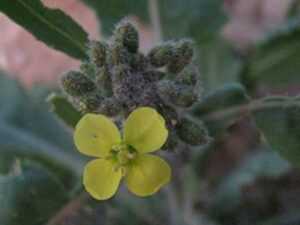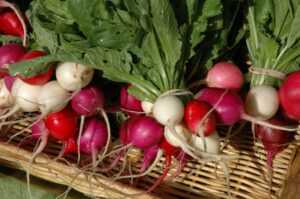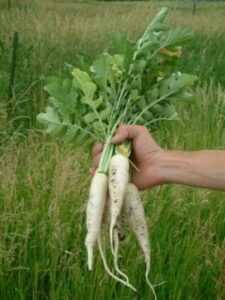This week we are delighted to introduce Roy Borochov, a neighbor from Kfar Bin Nun and one of Chubeza’s first clients, and the Gargir flour mills. Those of you who attended the Open Day may have seen (or even experimented with) the lovely mills Roy brought along to grind flour for pita.
Roy, the floor is yours:
When we established Gargir, we aimed to allow each and every one to consume homemade, healthy food. In our viewpoint, one day soon every household will own a home flour grinder. The ability to personally prepare the most basic food product, bread, is a great privilege. You owe it to yourself and your family members to produce healthy bread.
The time that ensues from grinding to use is critical in order to maintain the nutrients of the cereal grain. Once it is ground, the process of oxidation begins and the minerals and vitamins break down, diminishing the nutritional value of the flour. With our products, you can prepare the flour at home from a wide variety of cereals, in the quantity of your choice and with optimal freshness, thus retaining the nutritious benefits.
We offer you home flour grinders based on millstones. These grinders can grind any non-fatty cereal grain (wheat, spelt, rye, barley, hummus, corn and others). We carry a variety of models, from the compact and practical “Easy” model, to those with an ability to produce 125 gr. flour per minute, or the bigger ones, Billy200, Octagon2 (our flagship product) which can grind 220 gr. of your homemade flour in just one minute.
Naturally, as veteran Chubeza clients, we chose to join forces with Chubeza and open another door for you to healthy life.
Take a look at the prices of our grinders. You can make the order via the Chubeza online ordering system or directly from Gargir.
Important: if you order a grinder to be delivered with your vegetable box, please be certain to coordinate this with us so that someone is at home to receive it.
Bon Appetite! To your health!
____________________________
In honor of the return of the Brassicaceae roots (and Halloween) I am re-posting a bewitched newsletter. Cackle, cackle…
Radish, Turnip, Eye of Newt……………..
In a popular Hebrew book that my daughters love about five witches (by Ronit Chacham), radishes and turnips are major ingredients in the brew concocted for a spell by five very amusing witches. As it turns out, not only witches crave these vegetables. Among us mortals and muggles, the turnip and radish (along with a small radish and daikon) can be just as vital in a potion to ease the common cold, cough, mucous buildup, hoarseness, coughing, infections and other winter spells. Winter is the season in which the members of the Brassicaceae family (formerly the Cruciferae) thrive. They are cousins, not siblings, since the radishes belong to the Raphanus genus and the turnips to the Brassica genus, but today we will sandwich them all together (or stir them into the same cauldron) and discuss their common characteristics.
So we already know that they all belong to the Brassicaceae family, along with such members as broccoli, cauliflower, cabbage and kohlrabi, mustard greens, tat soi and others. Its former name was the Cruciferae, after the shape of its four-petal flowers, which resembles a crucifix. Here are some examples:
The Brassicaceaes are a venerable winter family, and we eat various parts of their plants: sometimes the flower buds (broccoli, cauliflower), sometimes the stem (kohlrabi) or the leaves (mustard, cabbage, tat soi and others) and also the roots, to whom this newsletter is dedicated today: the radish, daikon and turnip.
Truth be told, this is a populist division. The good parts of the turnip, daikon and radish are not only found underground–many parts of these vegetables can be eaten. For instance, turnip greens are very tasty, and some turnip varieties are grown specifically for their leaves and not roots. Leaves of the large radish are bitter and coarse, but the greens of small radishes can certainly be used in culinary pursuits. The French add small radish leaves to potato soup and to add a hint of pungency to salads made of steamed spinach.
Other varieties of radishes and turnips were developed in order to make oil from their seeds. These oils were used in the past, and Maimonides mentions them in discussing those oils permitted for Sabbath candle lighting: “At the outset, one is permitted to use other oils – e.g., radish oil, sesame oil, turnip oil, or the like. It is forbidden to use only those which were explicitly mentioned by our Sages.” (Mishnah Torah, Shabbat, Chapter 5, halakha 11)
And now, some words on each of these vegetables:
The turnip is an ancient cultivated growth that was possibly grown in gardens of old in China, Greece, Rome, Egypt and also here. In kitchens throughout, it was a basic, common vegetable. Assaf the Physician (Assaf Harofe Ben Brakhiyahu who lived in 6th century Tiberias) praised the leaves and seeds of the turnip: “The leaves will be useful for all mental distresses and for malaria, while its seeds will be useful in treatment of pain and all sorts of ailments that lead to death.” However, even the juice produced from the root itself is known in folk medicine as beneficial in treating the cough, hoarseness, mucous, and dryness of the nose and mouth. In natural medicine, turnip juice is used to treat malaise as well as kidney stones. In order to produce juice, one must press the root. Half a kilo of roots make one glass of juice. Half a kilo of squeezed leaves will make half a glass of juice.
There are many varieties of radishes, differing in size, shape and color, as well as pungency. At Chubeza, we grow radishes and daikons. Here are some illustrations of several radish beauties:
Instructions for Storing:
- Radishes and turnips are roots, i.e., their function is to absorb food and water from the earth in order to supply them to the plant as needed. When picked, we disconnect the plant from its current supply, and the roots hurry to transform the material they had accumulated to the plant’s leaves in order for them to continue to grow. The root itself will eventually become depleted. Therefore, when you receive a radish, turnip, or daikon (and the same goes for beets and carrots) with leaves attached, you must cut the leaves in order to preserve the root’s contents, to keep it fresh and firm for as long as possible.
- It’s best to store root vegetables in a closed container to isolate them from the processes in the fridge and the materials secreted from the rest of the vegetables and food.
Radishes and turnips are great served fresh in a salad or sandwich, but don’t forget to use them in cooking as well. Yes, they can be baked and stir-fried, and they will please your hearts by adding some coolness to this year’s scorching October.
Impatiently awaiting the rain, which may hopefully arrive next week. Keep your fingers crossed, like this Daikon fella we harvested today…
Alon, Bat Ami, Ya’ara and the Chubeza team
______________________________________
WHAT’S IN THIS WEEK’S BOXES?
Monday: Parsley/coriander, eggplants/bell peppers, pumpkin, tomatoes, lettuce, cucumbers, arugula, carrots, sweet potatoes Small boxes only: radishes, turnips
In the large box, in addition: Beets, daikon, garlic chives, lubia/beans, tot soi/kale/New Zealand spinach
Wednesday: daikon radish/small radish, lettuce, cucumbers, green peppers, cilantro/parsley, sweet potatoes, carrots, arugula, pumpkin, tomatoes, green beans/lubia – in small boxes
In the large box, in addition: turnip, kale/New Zealand spinach, garlic chive/leeks, green beans/lubia/eggplants








